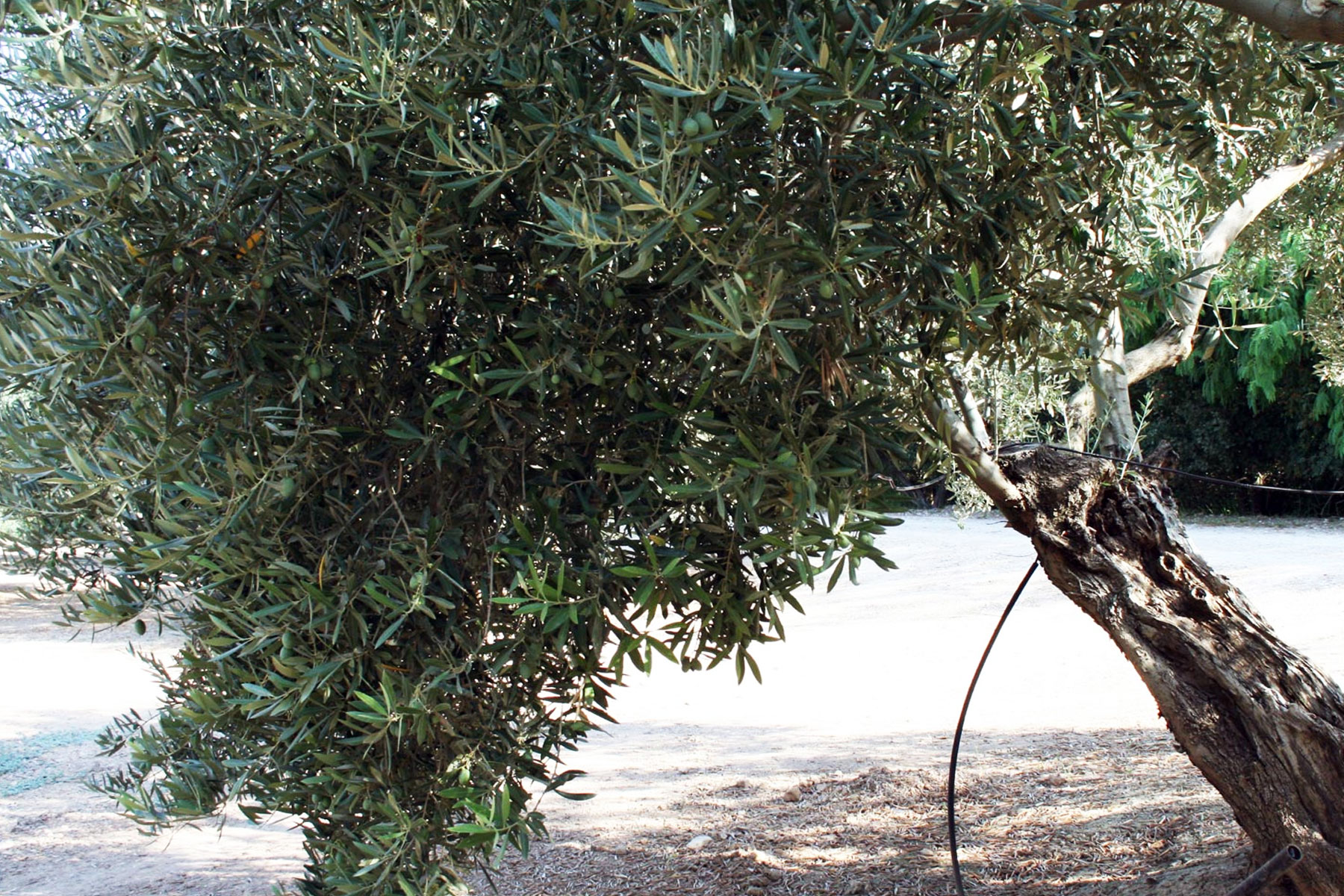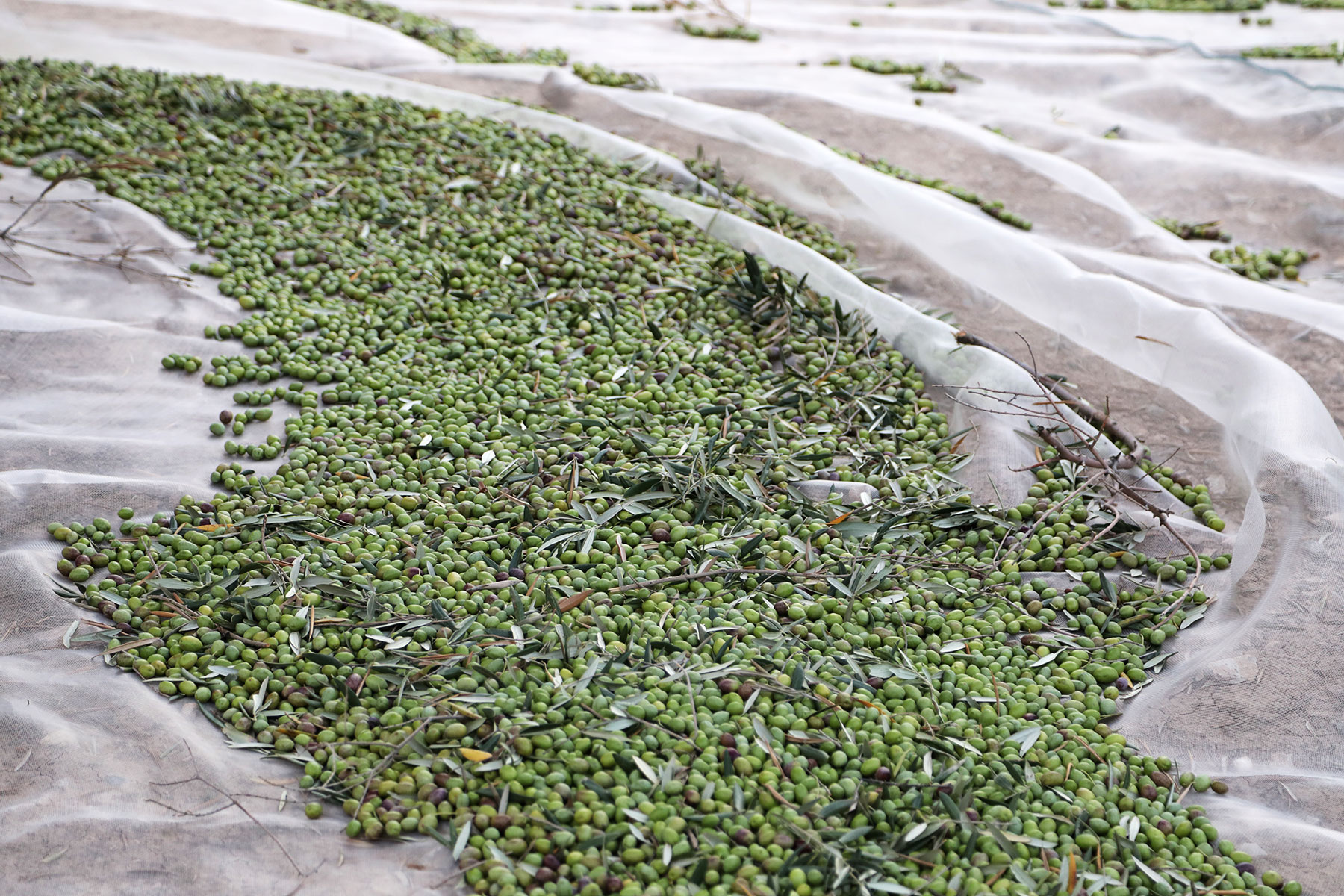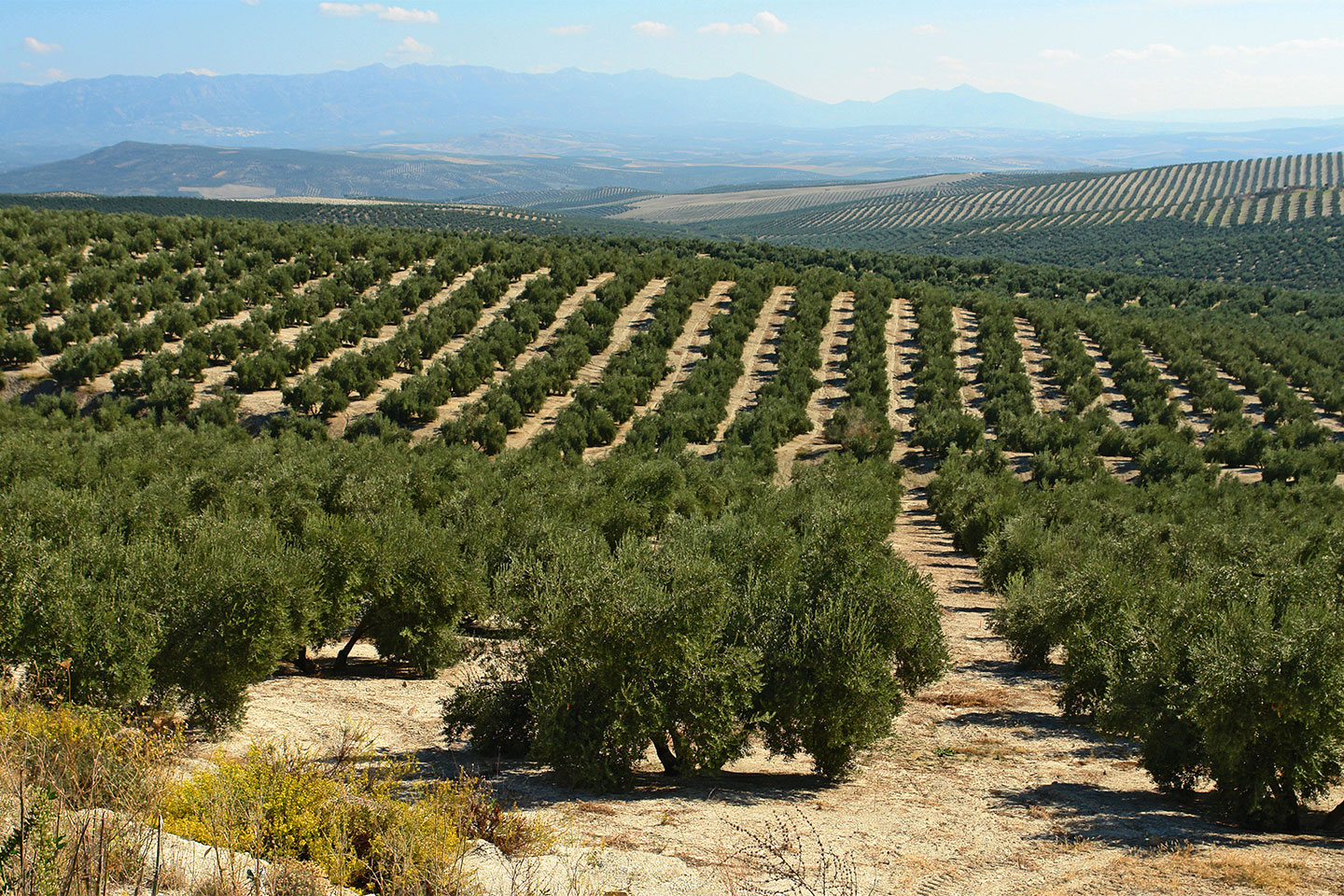Our Farm
Click to enlarge the image
Respect for the environment
Respect for the environment
Click to enlarge the image
Fertirrigation system
That why, for us, the most important thing to produce an excellent olive oil is the care of our trees and its fruit so that they can actually exudate oil at the end.
Click to enlarge the image
The Harvesting
The harvesting by traditional hand pole beating has been and is the traditional collecting system that consists in beating the trees with sticks to make the olives fall. Once they have been detached from the tree they must be taken as soon as possible to the oil mills. Although our system is integrated biomechanical and harvesting by hand pole beating in the first months of October for the green olives, our harvesting is mechanized by special olive vibrators, inverted umbrella type or multidirectional trunk vibrators.
Early Harvesting
Click to see more
Click to enlarge the image
Transportation
Transportation
Click to enlarge the image
Elaboration and Classification
Grinding Form
This arrangement is usually done according to the variety, the degree of maturity, the sanitary status. Once classified, the olives undergo a cleaning process, washing, weighing and storage until the grinding moment arrives. On the other hand, the olive oil is rich in natural antioxidants, such as α-tocopherols and phenolic components, in which action seems to slow down aging and cellular degeneration.
Click to enlarge the image
Click to enlarge the image
Separation and Cleaning
The olive oil is cleaned in the vertical centrifuge, which, as in the horizontal, consists of liquid separation (vegetable water and olive oil), because of its diverse densities.
Separation and Cleaning
The olive oil is cleaned in the vertical centrifuge, which, as in the horizontal, consists of liquid separation (vegetable water and olive oil), because of its diverse densities.
Click to enlarge the image








